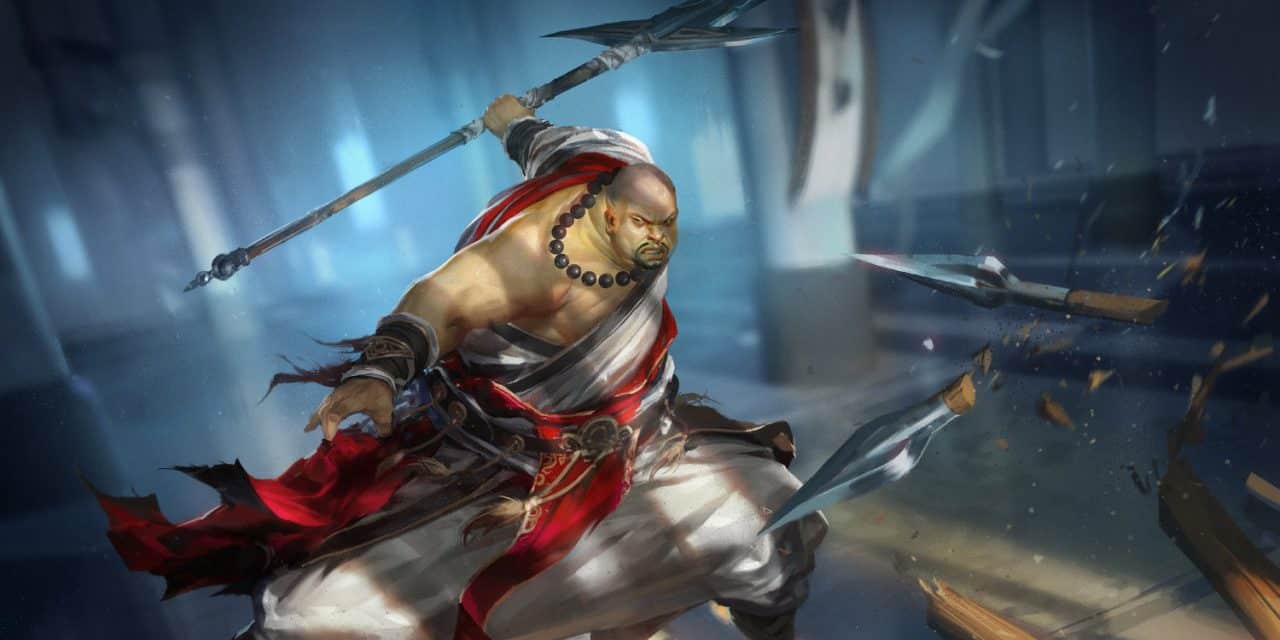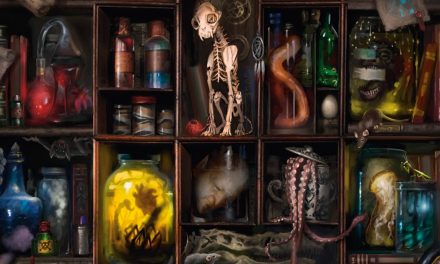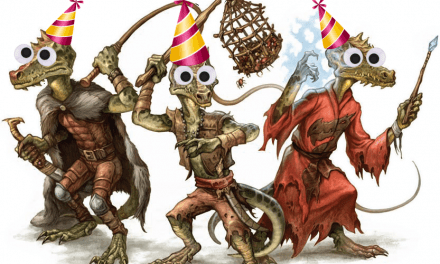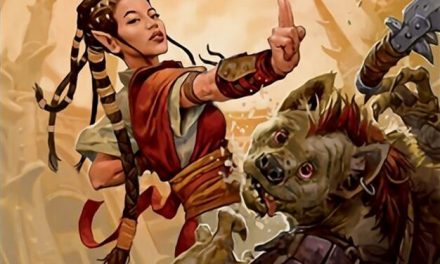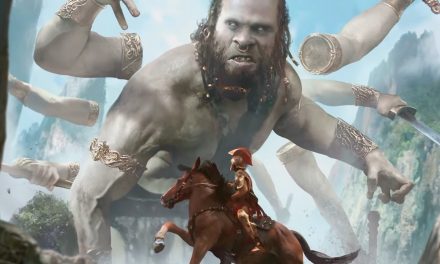Monks in 5e may be mostly regarded for their formidable unarmed fighting styles, but some walk a different path.
Relentlessly training with a variety of weapons, the Way of the Kensei began as a sword-fighting discipline. Over time, however, it came to include many different weapons in its training.
With the same intense training, study, and mastery that defines all Monk subclasses, the Kensei Monk has dedicated themselves to nothing short of mastery of their martial art.
Thankfully, you won’t need to spend years learning this subclass!
This is the full guide to the Way of the Kensei Monk in D&D 5e!
What is the Kensei Monk in D&D 5e?
While there’s no disputing how lethal Kensei Monks are with their chosen weapons of expertise, their focus isn’t necessarily on being a master warrior. It’s more of a side effect than anything.
Kensei Monks see beauty and form in the discipline that goes into effectively wielding a weapon. To the Kensei, a warrior who has truly mastered the sword is just as enthralling as a painter who has mastered their brush.
Mastery of these forms relies on discipline, precision, and fully committing oneself to the art. In this way, the weapon becomes more than just a tool. Instead, it’s a natural extension of the one who is wielding it.
The Way of the Kensei Monk in D&D 5e was first published in Xanathar’s Guide to Everything.
Role in the Party
In a lot of ways, you can think of the Kensei Monk as a type of hybrid between the Monk and Fighter classes.
The Kensei Monk’s role in the party is putting out as much damage as possible while still, ultimately, being a skirmisher. The features that you gain for taking the Way of the Kensei are mostly geared towards giving you more options for HOW you put out that damage.
Because the Kensei Monk is so expertly trained in such a variety of weapons, it’s rare that they’ll encounter a situation that they can’t get around. This is particularly true of situations requiring ranged attacks in which Monk characters can often find themselves without much to do.
Also Check Out: The Full Monk Class Guide for D&D 5e!
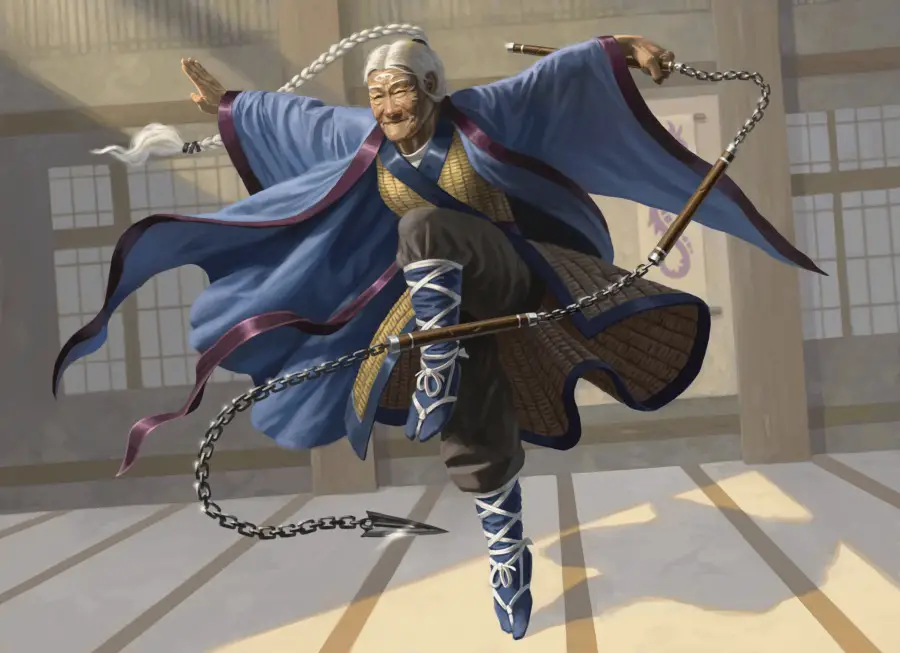
Kensei Monk Features 5e
Now that we’ve covered what the Kensei Monk is and their role in the party, let’s take a look at their unique subclass features.
As we covered in the last section, these features are largely geared towards keeping you on the offense. You’ll gain some defensive features and some that are more flavor than anything, but the focus is on giving you more options in melee combat.
Path of the Kensei (Level 3)
At level 3, you gain the Path of the Kensei feature.
This feature reflects the intense training that you’ve had with various weapons. Additionally, it also builds on the flavor of what a Kensei Monk is.
All of this combines to form the bedrock of how the Kensei Monk plays.
Since there are four parts to this feature, it’s best if we break it down one at a time.
Kensei Weapons
Because the Kensei Monk’s specialty is with weapons, you choose two types of weapons for this feature. You gain proficiency with the chosen weapon types if you don’t already have it.
Choose two types of weapons to be your Kensei weapons: one melee weapon and one ranged weapon. Each of these weapons can be any simple or martial weapon that lacks the “heavy” and “special” properties. The longbow is also a valid choice.
You gain proficiency with these weapons if you don’t already have it. Weapons of the chosen types are monk weapons for you
As you level up, you’ll be able to gain more weapon proficiencies with this feature. Specifically, you gain extra Kensei Weapons at levels 6, 11, and 17. These can be either melee or ranged as long as they still fit the criteria.
Because your choices count as Monk Weapons for you, they function a bit differently. I would highly recommend checking out my article that completely covers Monk Weapons as well!
Specifically, you will:
- Use your Dexterity for attack/damage rolls (as with the Finesse property)
- Deal damage based on your Martial Arts die (if it’s larger than the weapon’s damage die)
- Be able to activate your Martial Features despite using a weapon
In most cases, the Longbow will be your top ranged weapon pick thanks to its damage and range. However, you could go full-on “Gun-kata” (if you’re an Equilibrium fan) by mixing hand crossbows with your Martial Arts and the Crossbow Expert feat.
You’ll generally want to boost your ability scores instead of taking feats as a Monk, but it could still be an interesting take on the class!
For melee weapons, you’ve got a few standout options.
Remember: your damage can use your Martial Arts die with these. Focus on the TYPE of damage the weapon deals and not just the size of the damage die. This will help you get around enemies’ resistances and potentially exploit certain weaknesses!
Top melee weapon picks include:
- Longsword or Battleaxe (Use two-handed to deal 1d10 damage 14 levels before that’s your Martial Arts die!)
- Whip (Mixing Reach with the Monk’s abilities can be devastating!)
- Warhammer (Same as longsword but with bludgeoning damage)
- Spear (piecing damage, use two-handed for extra damage, can throw if necessary)
For your first melee weapon, I’d recommend either going with a longsword/battleaxe/warhammer for damage output or a whip for the increased melee range.
As you level up, you’ll be able to choose more weapons and round out your arsenal.
Agile Parry
Agile Parry is both useful and weird in equal measure.
If you make an unarmed strike as part of the Attack action on your turn and are holding a Kensei Weapon, you can use it to defend yourself if it is a melee weapon.
You gain a +2 bonus to AC until the start of your next turn while the weapon is in your hand and you aren’t incapacitated.
The specific wording of the trigger here is very important. You have to make an UNARMED strike as part of the ATTACK ACTION on your turn. Because the Monk’s Flurry of Blows is a bonus action, that won’t count here, unfortunately.
(Also note that the attack doesn’t have to hit. Attempting to hit but missing with your unarmed strike will still count!)
Until you hit level 5 and gain the Extra Attack feature, you have to decide if it’s better to put out more damage with your one Attack action or use your weapon defensively instead.
I’m not going to complain about +2 AC but it is a little weird that you’ll have a couple of levels after taking this subclass that you aren’t quite as incentivized to use your Kensei Weapon offensively.
Read the situation you’re in and try to determine what you think will help you most.
If you think rolling 1d10 with your longsword might deal the finishing blow, that’s a good idea. But if you’re finding yourself low on hit points and the enemy is hitting like a truck, that extra AC could save your life!
Once you gain the Extra Attack feature at level 5, it goes a lot smoother. Make one armed attack, one unarmed attack, and follow up with a Flurry of Blows!
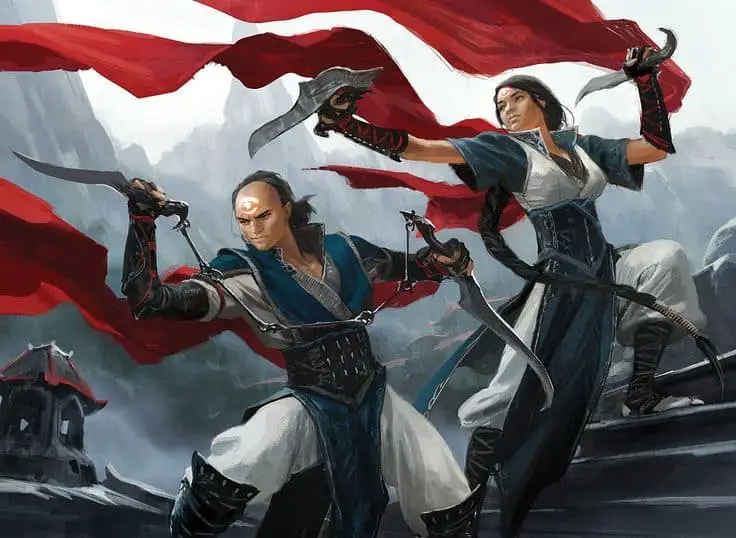
Kensei’s Shot
Kensei Monks can make for interesting ranged combatants and Kensei’s Shot gives their ranged attacks some extra “oomph.”
You can use a bonus action on your turn to make your ranged attacks with a Kensei weapon more deadly. When you do so, any target you hit with a ranged attack using a Kensei weapon takes an extra 1d4 damage of the weapon’s type. You retain this benefit until the end of the current turn.
If you’re pulling out the longbow, you don’t really have much use for your bonus action.
By using your bonus action to add some extra damage to your ranged attacks, you get some extra value for your action economy. When you get the Extra Attack feature, this bonus damage applies to each of those attacks.
Granted, 1d4 isn’t a ton of bonus damage but every little bit helps!
If you are considering pulling out your bow, just be aware that you won’t be able to apply the Monk class’s level 5 feature, Stunning Strike, to your ranged attacks.
Kensei’s Shot is helpful, but you’re blocking yourself from using one of the most powerful class features in the game. If you’re pulling out the bow, focus down whatever creature you’re trying to hit from range with Kensei’s Shot then hurry back to the frontline!
Related: Guide to Ranged Combat in D&D 5e
Way of the Brush
This one is just pure flavor.
You gain proficiency with your choice of calligrapher’s supplies or painter’s supplies.
From a flavor perspective, this makes sense. As we covered, the Kensei Monk’s training is less about becoming an instrument of death and more about form and the mastery of motion.
However, this probably won’t come up in the vast majority of D&D games.
Have fun with it and get creative if the opportunity presents itself, but this is the least consequential part of the Path of the Kensei feature.
Recommended: Mastering the Monk’s Flurry of Blows in D&D 5e
One With the Blade (Level 6)
As a Kensei Monk, you gain your next feature at level 6: One With the Blade.
This one is a two-parter.
Magic Kensei Weapons
Starting things off, we’ve got the Magic Kensei Weapons feature.
Attacks with your Kensei weapons count as magical for the purpose of overcoming resistance and immunity to nonmagical attacks and damage.
Some creatures (like Ghosts, Elementals, and Lycanthropes) have resistance or immunity to nonmagical attacks. Needless to say, it makes encounters with these creatures much easier if you have a way of getting around that!
As a Monk, your unarmed strikes gain the ability to overcome these resistances/immunities at level 6 with your Ki-Empowered Strikes feature. The Kensei Monk’s Magic Kensei Weapons feature expands this to include their Kensei weapons.
Especially if you haven’t found a magic weapon yet, this is a great feature to have!
Deft Strike
The second half of the Kensei Monk’s One With the Blade feature is Deft Strike. This lets you use your ki to pump out extra damage on a successful hit!
When you hit a target with a Kensei weapon, you can spend 1 ki point to cause the weapon to deal extra damage to the target equal to your Martial Arts die.
You can use this feature only once on each of your turns.
This is actually a bit on the situational side. You have to ask yourself if it’s better to use a ki point to add extra damage to a successful attack or to instead make two attacks with Flurry of Blows for (potentially) twice as much damage.
Think of this as the Kensei’s version of the Paladin’s Divine Smite or the Warlock’s Eldritch Smite. On a critical hit, you’re doubling the damage including what you add from Deft Strike. So it’s an obvious pick in that situation.
But (outside of a critical hit) you have to make a choice.
If the enemy has a high Armor Class (or the dice have just been extra finicky with you all game), it might be best to add the extra damage while you know it will hit.
On the other hand, you’re leaving the potential for two more hits on the table unless you spend another ki point. Do that too much and you’ll quickly find yourself without any ki to spend when you need it!
It will typically be better to use that ki point for Flurry of Blows, but don’t hesitate to use Deft Strike if you score a critical hit or just REALLY need to get in some guaranteed bonus damage!
(Also, don’t forget that your Longbow is a Kensei Weapon! Deft Strike will work with it!)
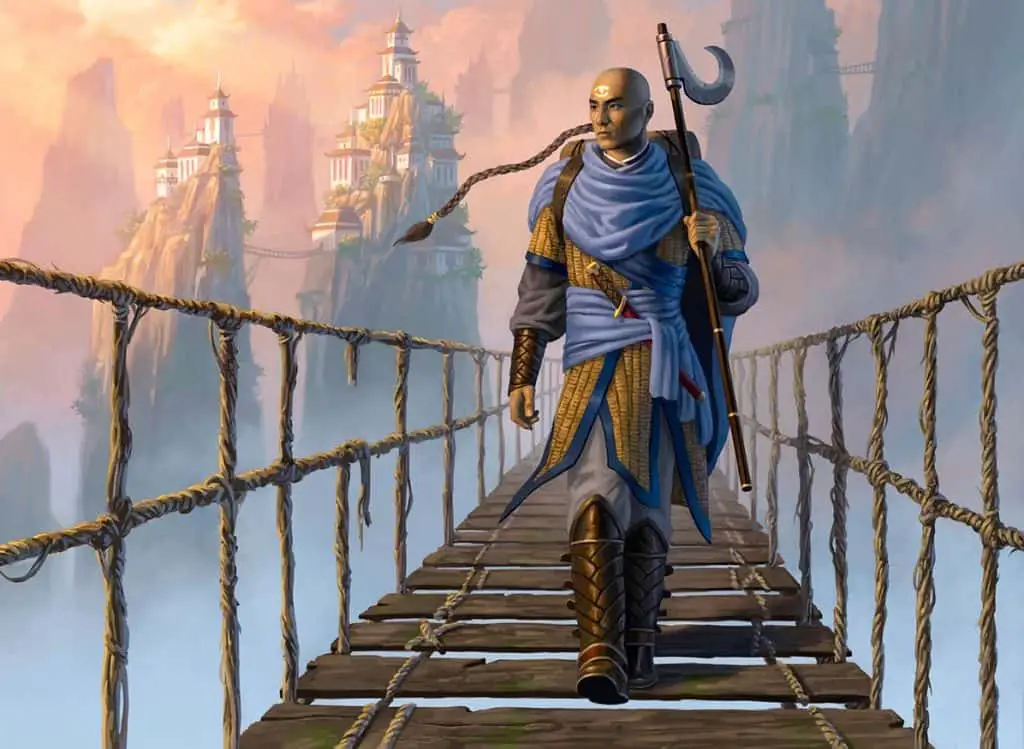
Sharpen the Blade (Level 11)
By channeling your ki in battle, you now have the ability to supercharge your weapons at level 11.
You gain the ability to augment your weapons further with your ki.
As a bonus action, you can expend up to 3 ki points to grant one Kensei weapon you touch a bonus to attack and damage rolls when you attack with it. The bonus equals the number of ki points you spent.
This bonus lasts for 1 minute or until you use this feature again.
This feature has no effect on a magic weapon that already has a bonus to attack and damage rolls.
Don’t underestimate how powerful a +3 bonus to both your attack and damage rolls is. Considering that the bonus you gain from spending ki with Sharpen the Blade will almost certainly last you the entire combat, this can be very powerful.
If you’re choosing to go all-out on offense and forego using your Agile Parry feature by making two armed attacks per turn, this can add up very quickly.
But as with all of your Monk features, just make sure that you’re paying attention to your ki points. If you’re in for a long slog without many chances to recover your ki points, 3 points for Sharpen the Blade can be a steep cost.
If you prefer using your bow in combat, Sharpen the Blade becomes easier to justify for the ki. You’re not missing out on both Agile Parry and Flurry of Blows by using your ki for Sharpen the Blade now!
Twice a round, you’re shooting arrows at the enemy that are benefitting from an extra +3 bonus to attack and damage! Use your bonus action to activate Kensei’s Shot and feel free to pepper in some extra damage from Deft Strike if you’d like.
The enemy will be mincemeat in no time!
Unerring Accuracy (Level 17)
Finally, we come to the Kensei Monk’s capstone feature: Unerring Accuracy!
At 17th level, your mastery of weapons grants you extraordinary accuracy. If you miss with an attack roll using a monk weapon on your turn, you can reroll it. You can use this feature only once on each of your turns.
Even the best weapon doesn’t count for much if you aren’t hitting with it. Unerring Accuracy serves as proof that you have developed a keen eye and perfectly steady hand as a result of your training!
Being able to reroll an attack that you missed each turn can be a lifesaver.
Let’s be honest: we’ve all had those games where it’s like our dice were conspiring against us!
Unerring Accuracy stacks with advantage if you’re in a situation where that would apply (like taking an enemy by surprise). If you still happen to miss, that’s a pretty big reroll!
In melee combat, you’re likely only making one attack per turn with your Kensei weapon anyway. Otherwise, you aren’t getting your AC bonus from Agile Parry. Now you’re almost certainly going to hit with it before following up with your unarmed strikes.
If you’re instead taking two attacks with your Kensei weapon (either going fully offensive in melee or shooting two arrows with your longbow), one of those will get this benefit per turn!
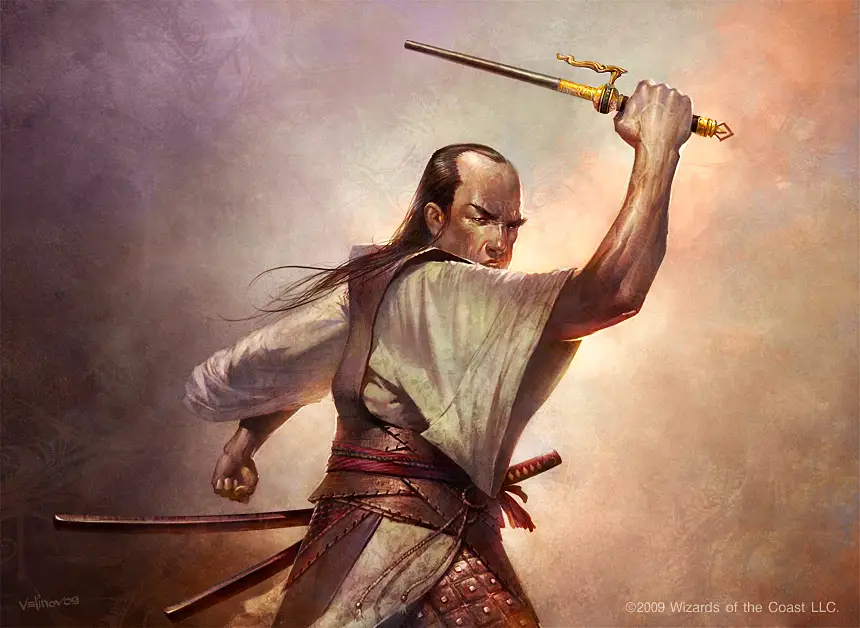
Connections
When making a Kensei Monk character, there are many ways that you can connect them to the campaign’s story.
You’ve certainly received formal (and likely intense) training. This might have been at a monastery as one would expect from a Monk character, but don’t be afraid to mix things up.
If you’ve considered playing the “wandering swordsman” type character, that would play very well into the Kensei Monk. Wandering alone, they practice their forms as a type of meditation on their pilgrimage toward some goal or destination.
Your Kensei might have spent some time in a military organization, served as a bodyguard for a noble, or found themselves as an enforcer in an organization with questionable morals but deep pockets.
What is calling your Kensei to the lifestyle of an adventurer?
Do they wish to test their skills against the most fearsome foes they can find? Are they journeying to bring something back to their home like wealth, honor, or the enlightenment that the Way of the Kensei offers its most dedicated students?
Your Kensei will likely find common ground quickly with other skilled and technique-focused characters like the Battlemaster Fighter or the College of Swords Bard.
Is the Kensei Monk Good in D&D 5e?
The Way of the Kensei Monk subclass is a bit of a mixed bag. It has some good qualities that bolster the Monk’s strengths while filling in some of the gaps.
Typically, that’s something that I really look for in a subclass. When I (finally) played a Monk in 5e back in 2018, I was super excited to make a Kensei.
Unfortunately, there’s almost a certain “clunky” feeling to it.
Agile Parry is useful for the AC bump, but the feature discourages you from swinging your weapon which is… you know… kind of what this subclass is all about… Once you get Extra Attack, it’s a bit better but still a bit awkward.
Then, the optional Dedicated Weapon feature from Tasha’s Cauldron of Everything more or less just lets every Monk be a Kensei.
With all of that said, it’s not all bad.
The Kensei Monk can actually make for a pretty solid ranged character. It’s a bit unorthodox, but it works!
Even from a flavor standpoint, it’s an option for those who want to play a melee combatant character but just aren’t quite resonating with a class like a Fighter. After all, you still get some really cool features from the Monk class that can let you do all kinds of crazy stuff!
I wouldn’t say that this is a bad subclass option for Monks in 5e. However, it’s just simply not anywhere near the same level as other Monastic Traditions like the Way of the Open Hand or the Way of the Long Death.
Personally, I enjoyed my time playing a Kensei Monk. But I admittedly less enjoyed the subclass and more enjoyed the character himself and the adventure that our group was playing.
But that’s just my experience.
You can see how the Kensei stacks up against the other Monastic Traditions in my Monk Subclasses Ranking!
Conclusion – Guide to the Kensei Monk in D&D 5e
I hope this guide to the Kensei Monk in D&D 5e has helped you!
It’s an interesting subclass that brings a lot of unique flavor to the table. Even though it’s mechanically one of the weaker options available to Monks, there’s still potential to make a very interesting character.
If you’ve played a Kensei Monk before or have an awesome idea for a Kensei character, let’s talk below in the comments! I’d love to read what you have to say!
Want all the latest player guides, DM tips, news, reviews, and more for D&D 5e? Sign up for the Tabletop Joab newsletter below!
You can also follow me on Facebook and Twitter.
If you found this article helpful and want to support the site, you can buy me a coffee here! (It’s not expected, but very appreciated!)

